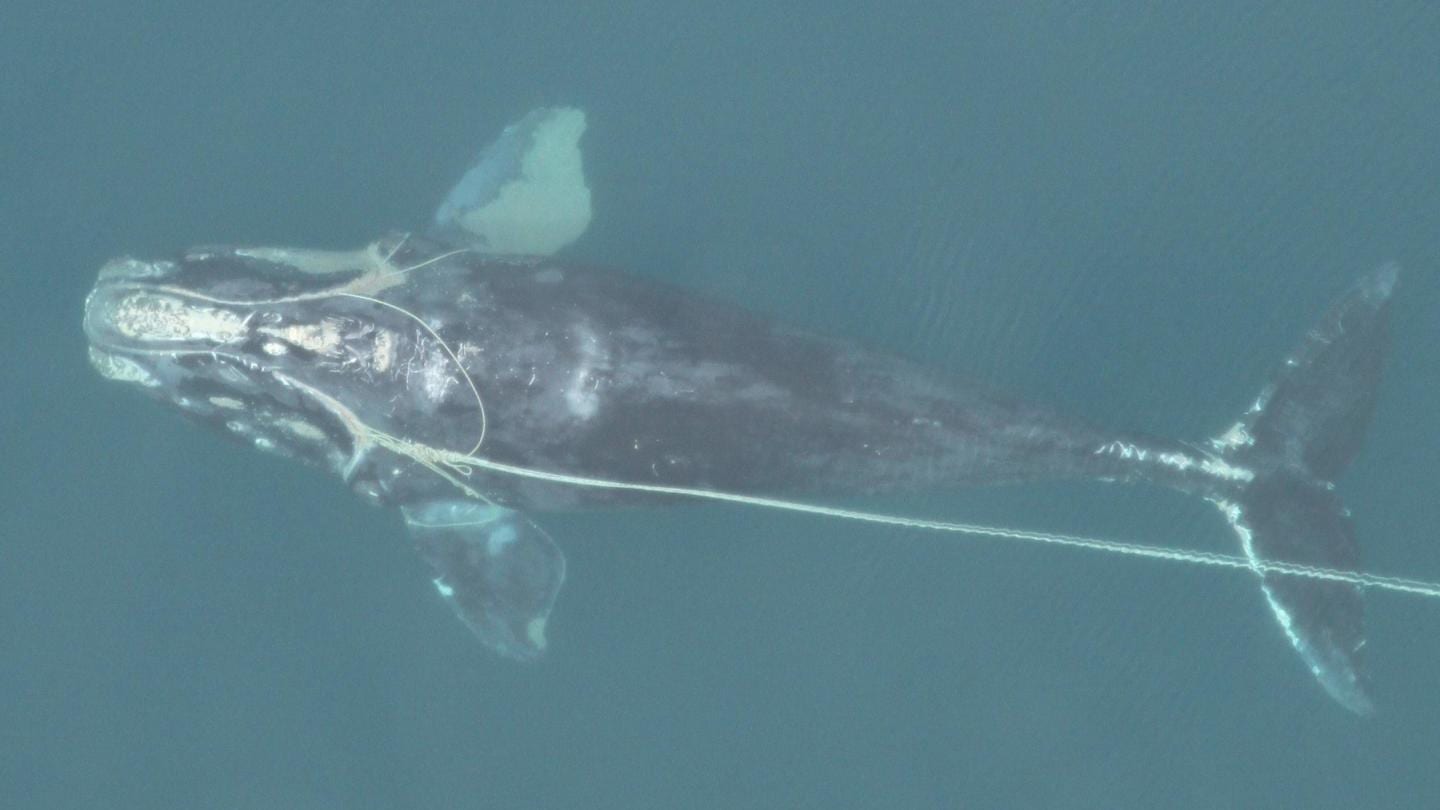WHOI working to help save critically endangered North Atlantic right whales

Ropeless gear, other technologies gain new urgencies
North Atlantic right whales are in crisis. There are approximately 360 individuals remaining, and with over 80% bearing scars of entanglements in fishing gear, the race to save this species is more critical than ever.
At the recent 2020 Ropeless Consortium and North Atlantic right whale annual meetings, WHOI researchers among others from the U.S and Canada, met to discuss reliable and affordable solutions. Ropeless fishing technology —the ability to retrieve gear without running a line from the surface to the bottom —presents a possible solution that could be both safe for the North Atlantic right whale and viable for the Atlantic fishing industry. Several prototypes are currently under development and some fishermen are partnering with scientists to test different ropeless fishing traps. Partners are helping in these efforts, including a grant from the SeaWorld Conservation Fund, which helped create a gear cache where offshore and inshore lobster fishermen could borrow ropeless technology to try it for themselves.
WHOI’s Michael Moore and Mark Baumgartner provide some of the expert voices on the crisis in stories from Cape Cod Times and the CBC in Canada.
